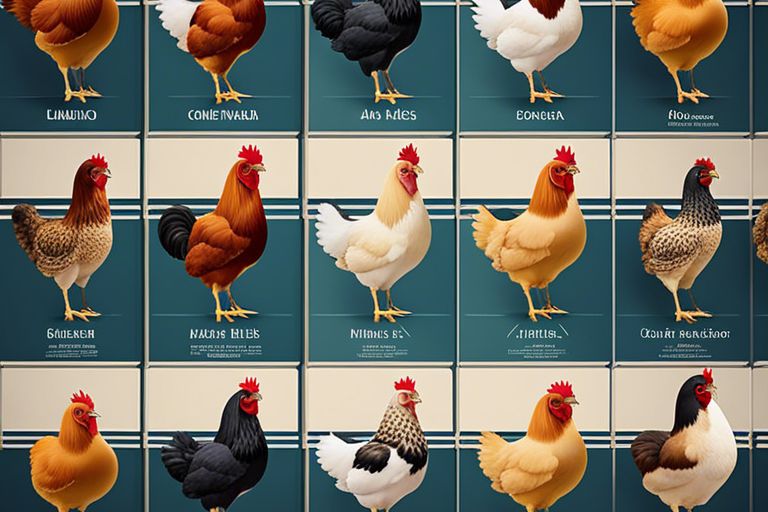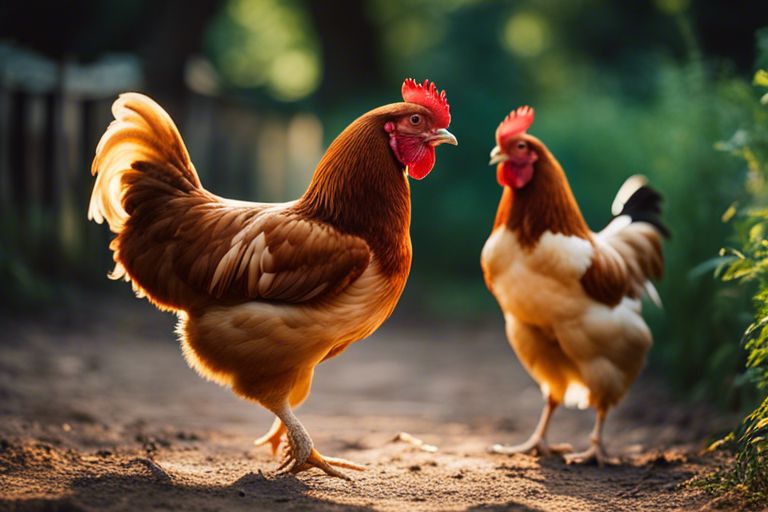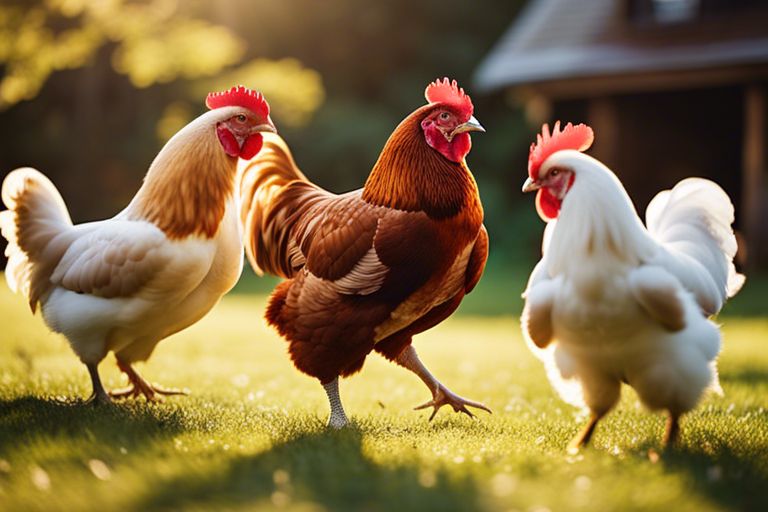It is fascinating to examine into the world of rare and unique chicken breeds that exist across the globe. From ornate plumage to distinctive behaviors, these breeds offer a glimpse into the diversity of poultry populations. Whether it’s the Frizzle with its curly feathers or the Ayam Cemani known for its striking black appearance, each breed has its own story to tell. Join us on a journey as we uncover the hidden gems of the chicken world and learn more about these extraordinary feathered creatures.
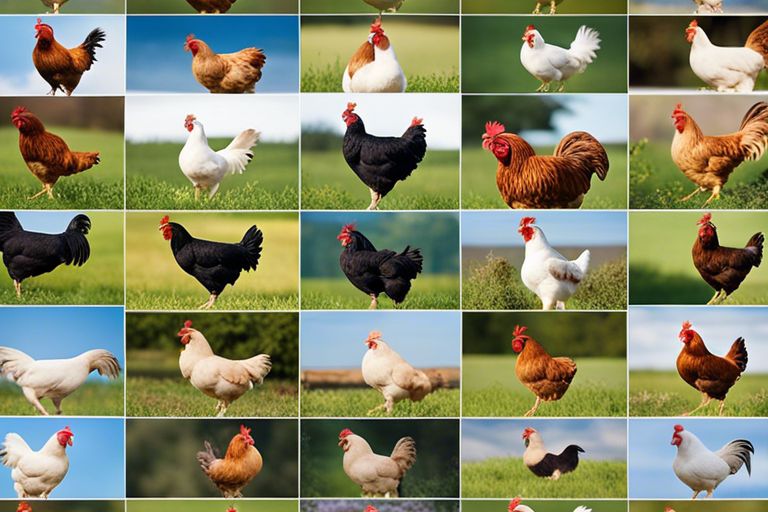
The Historical Significance of Poultry Breeds
Ancient Breeds and their Roles in Human Societies
For centuries, poultry breeds have played a crucial role in human societies around the world. Ancient breeds like the Egyptian Fayoumi and the Malay Chicken have been crucial for food, income, and cultural practices, serving as symbols of status and spirituality in various civilizations.
Preservation of Heritage Breeds
To ensure the survival of heritage breeds, preservation efforts have become increasingly important. Organizations and breed enthusiasts are working diligently to maintain genetic diversity and promote sustainable breeding practices to safeguard rare and unique chicken breeds from becoming extinct.
Historically, heritage breeds have thrived in small-scale farming communities, contributing to the biodiversity of poultry genetics. By preserving these breeds, we not only protect genetic heritage but also support local economies and promote sustainable agriculture practices that benefit both humans and the environment.
Distinctive Breeds by Continent
Asia’s Exotic Poultry
There’s a wide array of exotic poultry breeds in Asia that showcase unique characteristics and stunning appearances. From the striking plumage of the Ayam Cemani to the elegant feathered feet of the Silkie, these breeds are a testament to the diversity of chicken breeds in the region.
Europe’s Heirloom Varieties
To explore Europe’s heirloom varieties is to examine into a rich tapestry of breeds with deep historical significance. These breeds, such as the majestic Sussex and regal Legbar, have been carefully preserved over generations, reflecting the cultural heritage and commitment to maintaining biodiversity in poultry farming.
Varieties such as the Orpington, with its docile nature and vibrant plumage, and the rare Scots Dumpy, known for its short legs and quirky appearance, provide a glimpse into the fascinating world of European chicken breeds.
The Richness of African Breeds
Any discussion of African chicken breeds reveals a wealth of unique and hardy birds that have adapted to diverse climates and environments across the continent. From the Nanae of West Africa to the Venda of South Africa, these breeds carry a legacy of resilience and cultural significance.
Breeds like the Ovambo, with its striking coloration and strong foraging abilities, and the Naked Neck, known for its featherless neck that helps in heat tolerance, highlight the incredible diversity of African poultry breeds.
Uncommon Breeds of the Americas
An exploration of the Americas uncovers a treasure trove of uncommon chicken breeds that have flourished in different regions. From the vibrant Ameraucana with its blue eggs to the elegant Faverolles with its feathered feet, these breeds bring a touch of rarity and charm to poultry enthusiasts.
For instance, the Rhode Island Red, a popular breed for its prolific egg-laying abilities, and the quirky Polish with its ornate crest, showcase the unique traits that make American chicken breeds so fascinating.
Oceania’s Indigenous Fowl
Varieties of indigenous fowl in Oceania represent a blend of ancient traditions and natural adaptation to the Pacific environment. These breeds, like the intelligent Araucana and the hardy Norfolk Grey, are not only beautiful but also well-suited to the challenges of island living.
Plus, the Australian Langshan, recognized for its glossy plumage and stately appearance, and the Maori, a breed with distinct markings and robust constitution, offer a glimpse into the diversity of Oceania’s unique chicken breeds.
Understanding Rare Breed Characteristics
Physical Traits and Adaptations
To truly understand rare chicken breeds, one must examine into their physical traits and adaptations. These breeds often possess unique features that set them apart from more common varieties. From an exquisite plumage to distinctive comb shapes or even specialized adaptations for harsh climates, these characteristics make rare breeds a fascinating subject of study.
Behavioral and Temperamental Traits
On the behavioral and temperamental front, rare chicken breeds can offer a diverse range of traits that are not often found in mainstream breeds. Their behavior can vary from being particularly docile and friendly to more independent and flighty. Understanding these traits can play a crucial role in selecting the right breed for a specific purpose, whether it be for egg production, ornamental purposes, or simply as a delightful addition to a backyard flock.
Traits such as foraging ability, broodiness, and overall temperament can significantly impact the overall experience of keeping rare chicken breeds. Some breeds may have a strong maternal instinct, making them excellent mothers for hatching eggs, while others may excel in free-ranging environments due to their foraging skills. By delving into these behavioral traits, enthusiasts can gain a deeper appreciation for the diversity and uniqueness of rare chicken breeds.
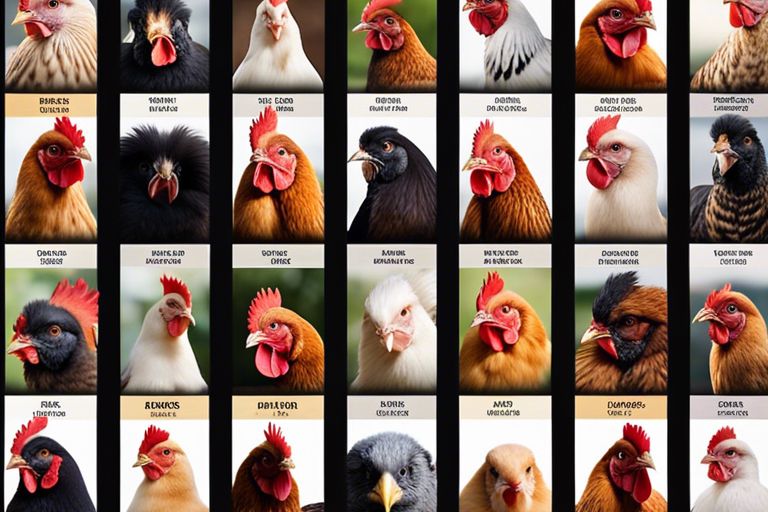
The Role of Rare Breeds in Modern Agriculture
Sustainable Farming and Genetic Diversity
To ensure the long-term sustainability of agriculture, maintaining genetic diversity within livestock populations is crucial. Rare chicken breeds play a vital role in this aspect as they possess unique genetic traits that could be invaluable in the face of changing environmental conditions and emerging diseases. By conserving and promoting these rare breeds, farmers are contributing to the resilience and adaptability of the overall chicken population.
Rare Breeds as a Source of Specialty Products
For artisanal farmers and specialty food producers, rare chicken breeds are a treasure trove of unique characteristics that can be translated into high-quality, niche products. These breeds often have distinctive flavor profiles, textures, and egg colors that appeal to consumers looking for something beyond the standard options available in supermarkets. By incorporating rare breed chickens into their production systems, these businesses are able to offer a point of differentiation in a competitive market.
The utilization of rare chicken breeds in specialty products also helps to preserve the cultural heritage and heritage of local communities. Through promoting and consuming products made from rare breeds, consumers are not only enjoying a unique culinary experience but also contributing to the preservation of genetic heritage that may otherwise be lost.

Conservation and Preservation Efforts
Global Initiatives for Poultry Preservation
Many organizations and governments around the world have recognized the importance of conserving rare and unique chicken breeds. They have initiated global efforts to preserve these breeds, such as establishing breeding programs, creating gene banks, and promoting sustainable farming practices that prioritize genetic diversity.
Challenges in Maintaining Breed Populations
The conservation of rare chicken breeds faces several challenges, including the loss of habitat for traditional poultry farming, competition from commercial breeds, and limited resources for breeding and conservation programs. Any successful preservation efforts require collaboration between breeders, farmers, researchers, and policymakers to overcome these challenges and ensure the survival of rare chicken breeds for future generations.
Maintaining the genetic diversity of chicken breeds is crucial for sustainable agriculture and food security. Conservation efforts play a vital role in preserving the cultural heritage and genetic resources of poultry that have evolved over centuries. By raising awareness, providing support, and implementing conservation strategies, we can safeguard the unique characteristics and traits of rare chicken breeds worldwide.
To wrap up
Summing up, the exploration of rare and unique chicken breeds around the world has unveiled a fascinating array of diverse characteristics, colors, and sizes that showcase the rich heritage of poultry farming. From the regal Ayam Cemani to the fluffy Silkie Chicken, each breed offers a special charm that appeals to enthusiasts and breeders alike. By delving into the history and characteristics of these rare breeds, we gain a deeper appreciation for the important role chickens play in cultures around the globe. As we continue to study and preserve these unique breeds, we contribute to the conservation of genetic diversity in poultry populations, ensuring a vibrant and sustainable future for these extraordinary birds.
FAQ
Q: What are some rare and unique chicken breeds around the world?
A: Some rare and unique chicken breeds around the world include the Ayam Cemani, Silkie, Frizzle, Marans, Polish, and Naked Neck.
Q: What makes the Ayam Cemani breed unique?
A: The Ayam Cemani is known for its entirely black feathers, skin, and even internal organs, making it one of the rarest and most unique chicken breeds in the world.
Q: What are the distinguishing features of the Silkie breed?
A: Silkies are known for their fluffy feathering, black skin, and blue earlobes, as well as their gentle and friendly temperament.
Q: Why are Frizzle chickens unique?
A: Frizzle chickens have feathers that curl outward instead of lying flat, giving them a distinctive and eye-catching appearance.
Q: What is special about Marans chickens?
A: Marans chickens are prized for their dark brown eggs, often referred to as “chocolate eggs,” making them a popular choice among backyard chicken enthusiasts.
Q: What sets the Polish breed apart from other chickens?
A: Polish chickens are known for their distinctive crest of feathers on top of their heads, giving them a quirky and unique look compared to other breeds.
Q: What makes the Naked Neck breed stand out?
A: Naked Neck chickens, also known as Turkens, have a featherless neck, which sets them apart visually from other chicken breeds and makes them more adaptable to warm climates.
